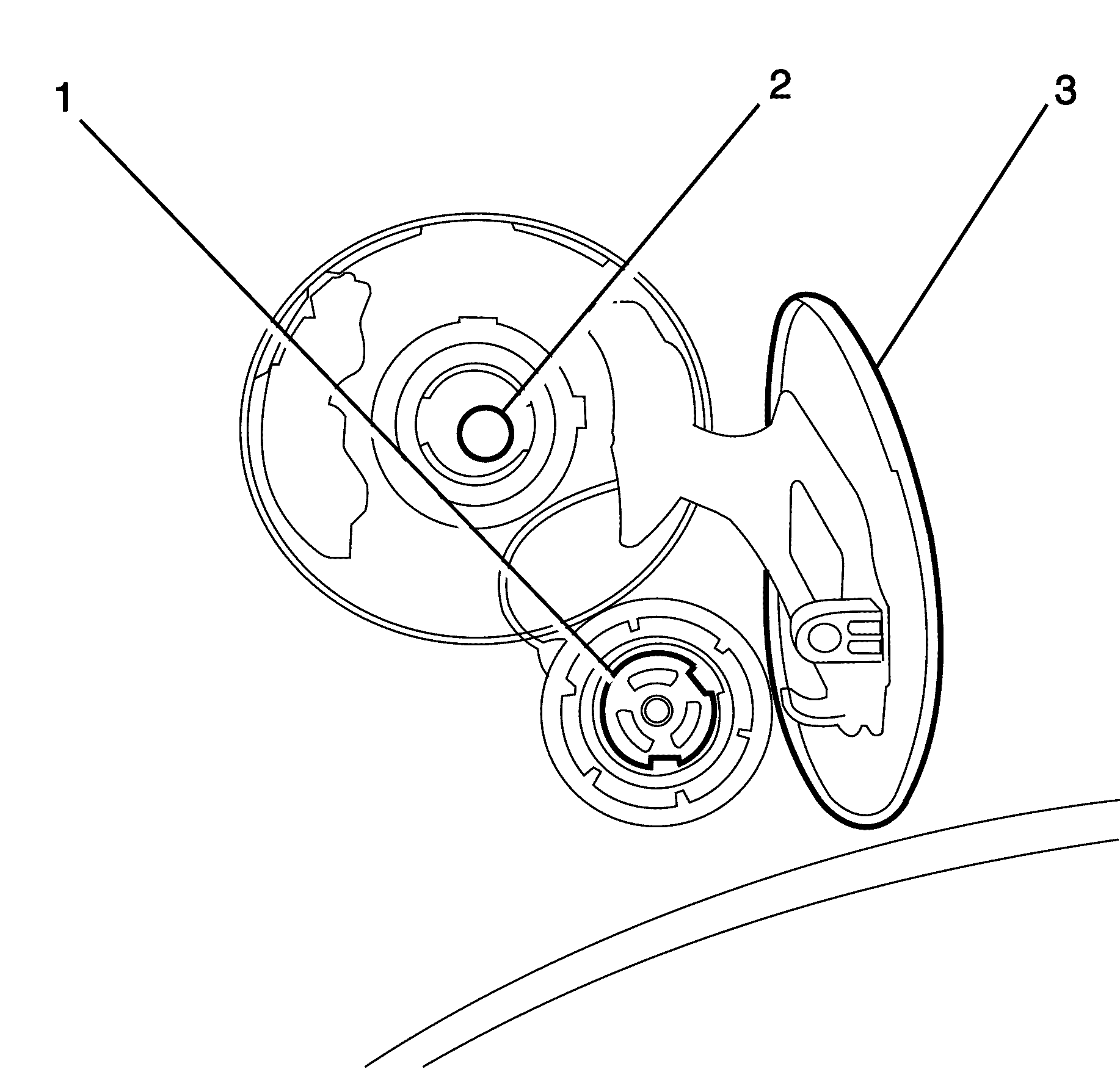The fuel filler cap (1) is a screw-on type, with an integrated tightening
torque limiting mechanism. When installing the cap, tighten it until a ratcheting
(clicking) sound is heard, indicating the cap is properly tightened. The fuel tank
filler cap is tethered to the fuel filler pocket. The fuel tank filler cap requires
a quarter of a turn in order to be removed.

